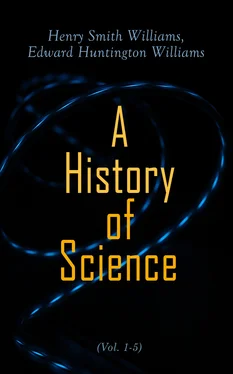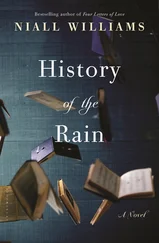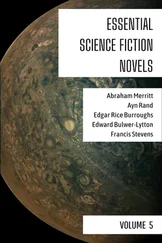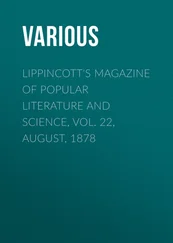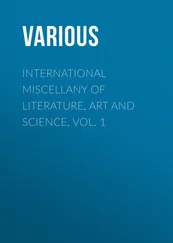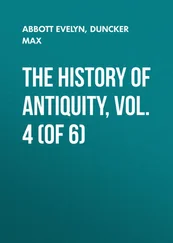But perhaps the feat of all others that most appealed to the imagination of his contemporaries, and possibly also the one that had the greatest bearing upon the position of Archimedes as a scientific discoverer, was the one made familiar through the tale of the crown of Hiero. This crown, so the story goes, was supposed to be made of solid gold, but King Hiero for some reason suspected the honesty of the jeweller, and desired to know if Archimedes could devise a way of testing the question without injuring the crown. Greek imagination seldom spoiled a story in the telling, and in this case the tale was allowed to take on the most picturesque of phases. The philosopher, we are assured, pondered the problem for a long time without succeeding, but one day as he stepped into a bath, his attention was attracted by the overflow of water. A new train of ideas was started in his ever-receptive brain. Wild with enthusiasm he sprang from the bath, and, forgetting his robe, dashed along the streets of Syracuse, shouting: "Eureka! Eureka!" (I have found it!) The thought that had come into his mind was this: That any heavy substance must have a bulk proportionate to its weight; that gold and silver differ in weight, bulk for bulk, and that the way to test the bulk of such an irregular object as a crown was to immerse it in water. The experiment was made. A lump of pure gold of the weight of the crown was immersed in a certain receptacle filled with water, and the overflow noted. Then a lump of pure silver of the same weight was similarly immersed; lastly the crown itself was immersed, and of course—for the story must not lack its dramatic sequel—was found bulkier than its weight of pure gold. Thus the genius that could balk warriors and armies could also foil the wiles of the silversmith.
Whatever the truth of this picturesque narrative, the fact remains that some, such experiments as these must have paved the way for perhaps the greatest of all the studies of Archimedes—those that relate to the buoyancy of water. Leaving the field of fable, we must now examine these with some precision. Fortunately, the writings of Archimedes himself are still extant, in which the results of his remarkable experiments are related, so we may present the results in the words of the discoverer.
Here they are: "First: The surface of every coherent liquid in a state of rest is spherical, and the centre of the sphere coincides with the centre of the earth. Second: A solid body which, bulk for bulk, is of the same weight as a liquid, if immersed in the liquid will sink so that the surface of the body is even with the surface of the liquid, but will not sink deeper. Third: Any solid body which is lighter, bulk for bulk, than a liquid, if placed in the liquid will sink so deep as to displace the mass of liquid equal in weight to another body. Fourth: If a body which is lighter than a liquid is forcibly immersed in the liquid, it will be pressed upward with a force corresponding to the weight of a like volume of water, less the weight of the body itself. Fifth: Solid bodies which, bulk for bulk, are heavier than a liquid, when immersed in the liquid sink to the bottom, but become in the liquid as much lighter as the weight of the displaced water itself differs from the weight of the solid." These propositions are not difficult to demonstrate, once they are conceived, but their discovery, combined with the discovery of the laws of statics already referred to, may justly be considered as proving Archimedes the most inventive experimenter of antiquity.
Curiously enough, the discovery which Archimedes himself is said to have considered the most important of all his innovations is one that seems much less striking. It is the answer to the question, What is the relation in bulk between a sphere and its circumscribing cylinder? Archimedes finds that the ratio is simply two to three. We are not informed as to how he reached his conclusion, but an obvious method would be to immerse a ball in a cylindrical cup. The experiment is one which any one can make for himself, with approximate accuracy, with the aid of a tumbler and a solid rubber ball or a billiard-ball of just the right size. Another geometrical problem which Archimedes solved was the problem as to the size of a triangle which has equal area with a circle; the answer being, a triangle having for its base the circumference of the circle and for its altitude the radius. Archimedes solved also the problem of the relation of the diameter of the circle to its circumference; his answer being a close approximation to the familiar 3.1416, which every tyro in geometry will recall as the equivalent of pi.
Numerous other of the studies of Archimedes having reference to conic sections, properties of curves and spirals, and the like, are too technical to be detailed here. The extent of his mathematical knowledge, however, is suggested by the fact that he computed in great detail the number of grains of sand that would be required to cover the sphere of the sun's orbit, making certain hypothetical assumptions as to the size of the earth and the distance of the sun for the purposes of argument. Mathematicians find his computation peculiarly interesting because it evidences a crude conception of the idea of logarithms. From our present stand-point, the paper in which this calculation is contained has considerable interest because of its assumptions as to celestial mechanics. Thus Archimedes starts out with the preliminary assumption that the circumference of the earth is less than three million stadia. It must be understood that this assumption is purely for the sake of argument. Archimedes expressly states that he takes this number because it is "ten times as large as the earth has been supposed to be by certain investigators." Here, perhaps, the reference is to Eratosthenes, whose measurement of the earth we shall have occasion to revert to in a moment. Continuing, Archimedes asserts that the sun is larger than the earth, and the earth larger than the moon. In this assumption, he says, he is following the opinion of the majority of astronomers. In the third place, Archimedes assumes that the diameter of the sun is not more than thirty times greater than that of the moon. Here he is probably basing his argument upon another set of measurements of Aristarchus, to which, also, we shall presently refer more at length. In reality, his assumption is very far from the truth, since the actual diameter of the sun, as we now know, is something like four hundred times that of the moon. Fourth, the circumference of the sun is greater than one side of the thousand-faced figure inscribed in its orbit. The measurement, it is expressly stated, is based on the measurements of Aristarchus, who makes the diameter of the sun 1/170 of its orbit. Archimedes adds, however, that he himself has measured the angle and that it appears to him to be less than 1/164, and greater than ½00 part of the orbit. That is to say, reduced to modern terminology, he places the limit of the sun's apparent size between thirty-three minutes and twenty-seven minutes of arc. As the real diameter is thirty-two minutes, this calculation is surprisingly exact, considering the implements then at command. But the honor of first making it must be given to Aristarchus and not to Archimedes.
We need not follow Archimedes to the limits of his incomprehensible numbers of sand-grains. The calculation is chiefly remarkable because it was made before the introduction of the so-called Arabic numerals had simplified mathematical calculations. It will be recalled that the Greeks used letters for numerals, and, having no cipher, they soon found themselves in difficulties when large numbers were involved. The Roman system of numerals simplified the matter somewhat, but the beautiful simplicity of the decimal system did not come into vogue until the Middle Ages, as we shall see. Notwithstanding the difficulties, however, Archimedes followed out his calculations to the piling up of bewildering numbers, which the modern mathematician finds to be the consistent outcome of the problem he had set himself.
Читать дальше
